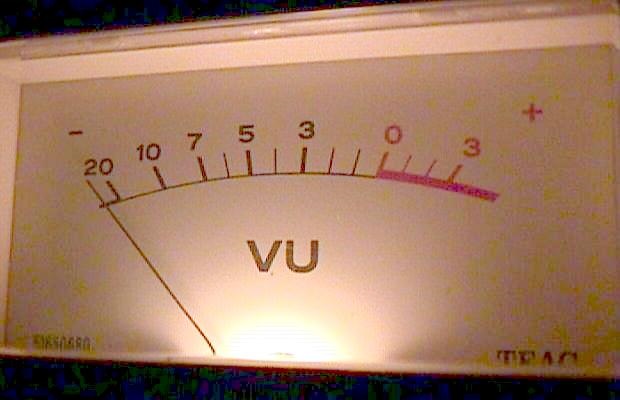To understand the deciBel fully is difficult, but the basics are pretty simple
The decibel (or dB for short) is an important spec because it allows us to measure what’s happening with audio levels. Actually, there are several different kinds of dB, and a complete treatment of the subject could take up a book. So, for now let’s deal with the dB in general terms. Simply stated, the dB is a unit of ratio between two audio signals; probably the best way to become familiar with the dB is through some examples.
Suppose we’re listening to an amplifier/speaker combination, and have a sound level meter calibrated in dB that registers changes in the acoustic output (the level) of this system. Furthermore, let’s suppose the input to the amplifier is not a complex musical source (such as a recording), but instead is a very pure audio test tone that can vary in frequency from 20 Hz to 25 kHz.
Remember, since the dB expresses a ratio, we’re going to need some kind of standard signal to which we can compare other signals in order to derive this ratio. For example, you could adjust the tone’s level for a comfortable listening level, decide this is your standard reference level, and adjust the sound level meter so that it reads “0 dB” at this reference level.
Note that there’s already a big advantage to working with the dB: the absolute sound level coming out of the speakers isn’t important, so we can listen at any volume level. What we’re looking for are changes in volume level compared to the standard reference signal. The amount of change is a ratio, which is then expressed in dB. A signal that is stronger than our reference creates a ratio that is plus so many dB, while a signal that is weaker than our reference creates a ratio that is minus so many dB.
A good reference frequency to start off with is 1 kHz, because the greatest response anomalies in devices like loudspeakers tend to occur at the limits of the audio spectrum. Thus, 1 kHz is a good reference frequency since it lies in the approximate “middle” of the audio range.
So, we have our reference frequency (1 kHz), and a reference level (0 dB). Now, let’s vary the test tone frequency as we monitor the output of the amplifier/speaker combination with the sound level meter. Since no speaker is perfect, it’s pretty safe to assume that the output will vary somewhat at different frequencies. Typically, in the lower regions (below around 100 Hz) the response starts dropping off and becomes relatively uneven.
A typical speaker’s response might be summarized as varying no more than 6 dB from 60 Hz up to about 18 kHz. A spec sheet would thus indicate the response as “plus or minus 3 dB, 60 Hz – 18 kHz.” This response would be typical of a medium-size, bookshelf speaker.
However, while specs can be used to enlighten, they can also be used to deceive. Two speakers could have identical printed specs (such as plus or minus 3 dB, 50 Hz to 18 kHz), but one could have a much smoother response with just a dropoff at the extreme high and low frequencies, while the other looks like a relief map of the Alps and has all kinds of midrange peaks and dips that affect the sound.
Of course, speakers are not the only devices with response variations—microphones, pickups, headphones, and virtually all other transducers (i.e., devices that convert one form of energy to another, like air pressure to voltage) have responses that can be anything but flat. But at least by measuring the variations in terms of dB, we can find out how close it is to a flat response—or how far away.
